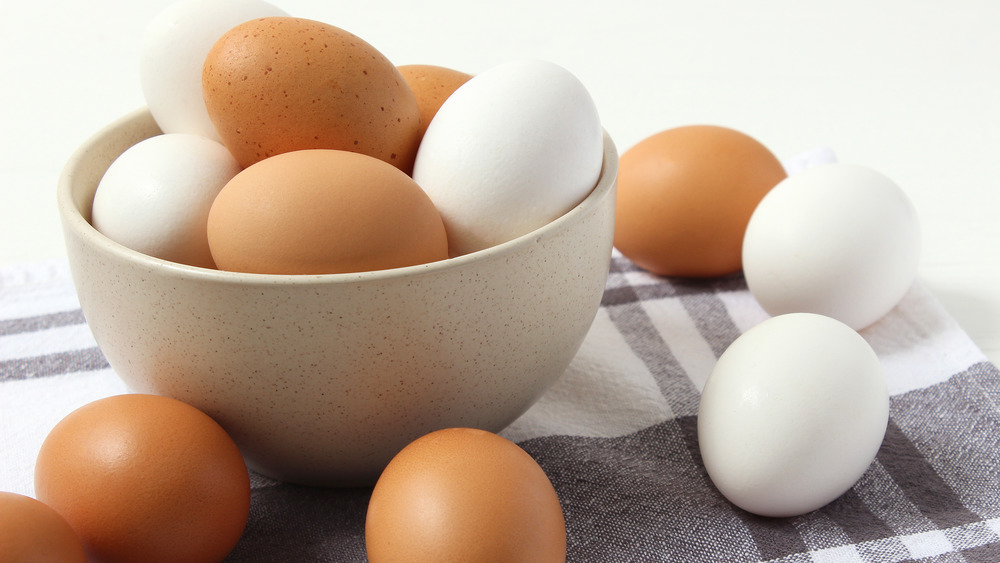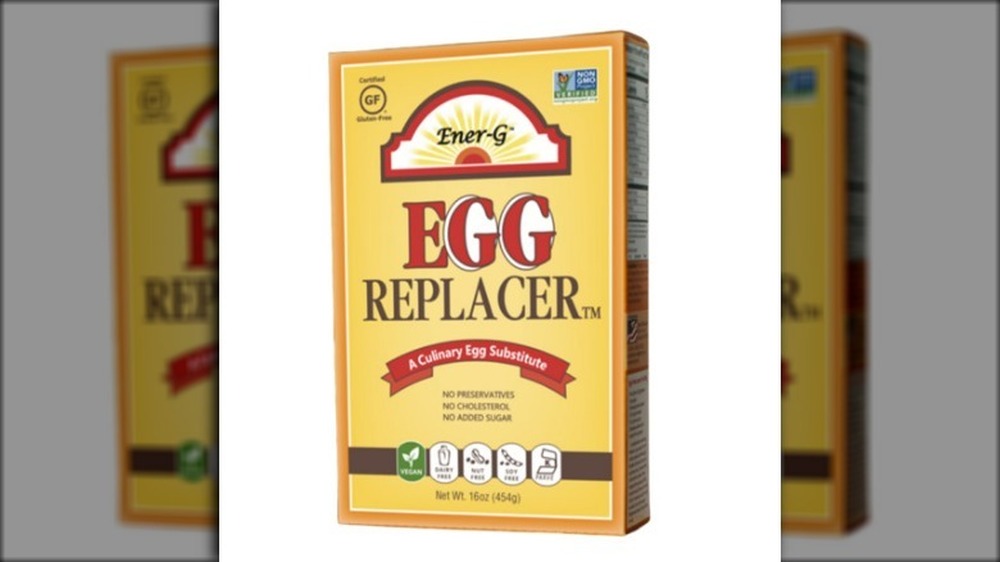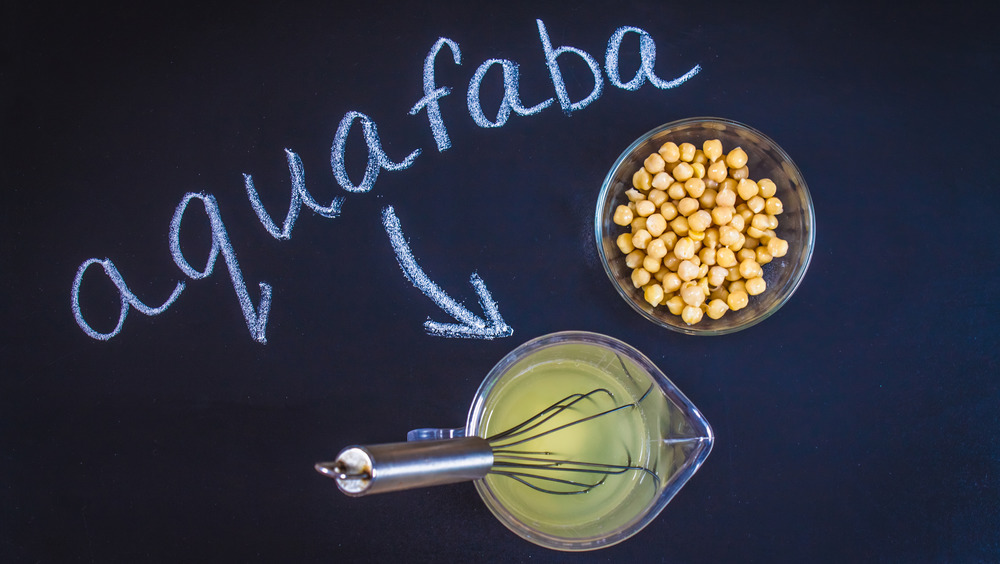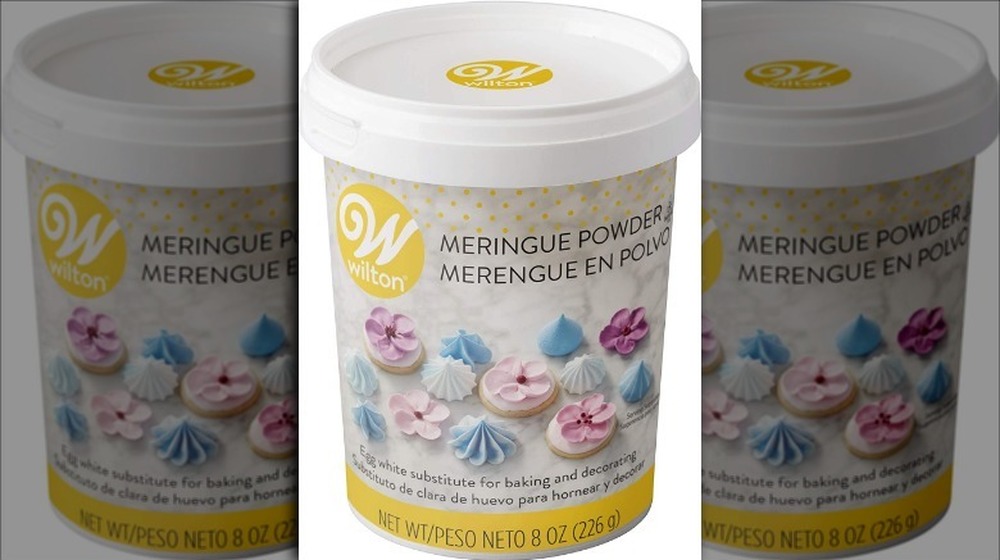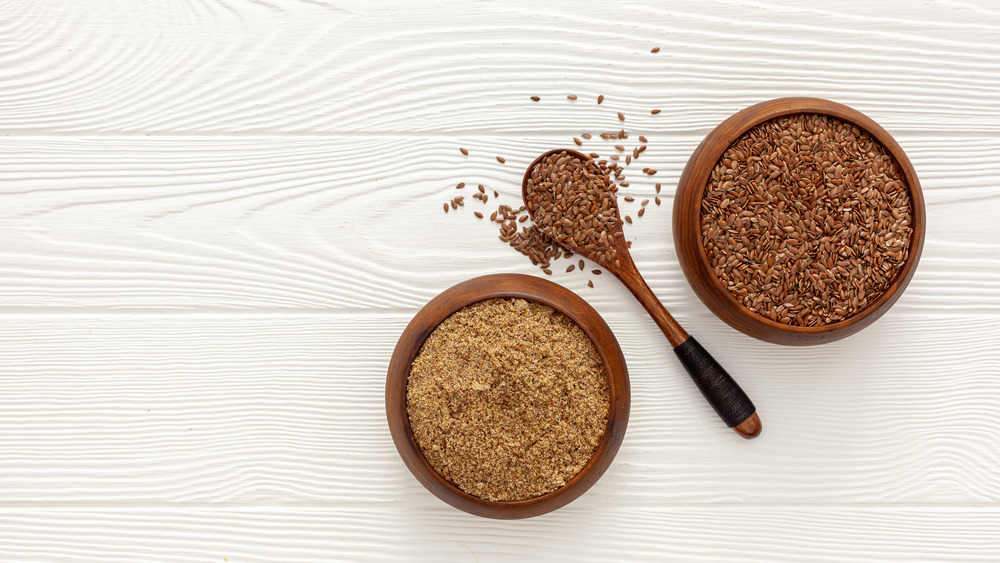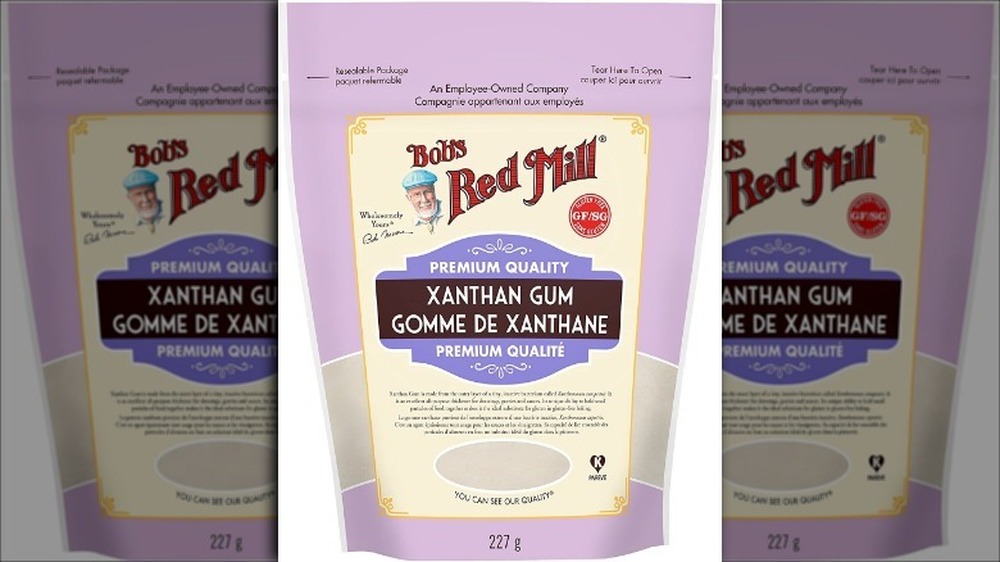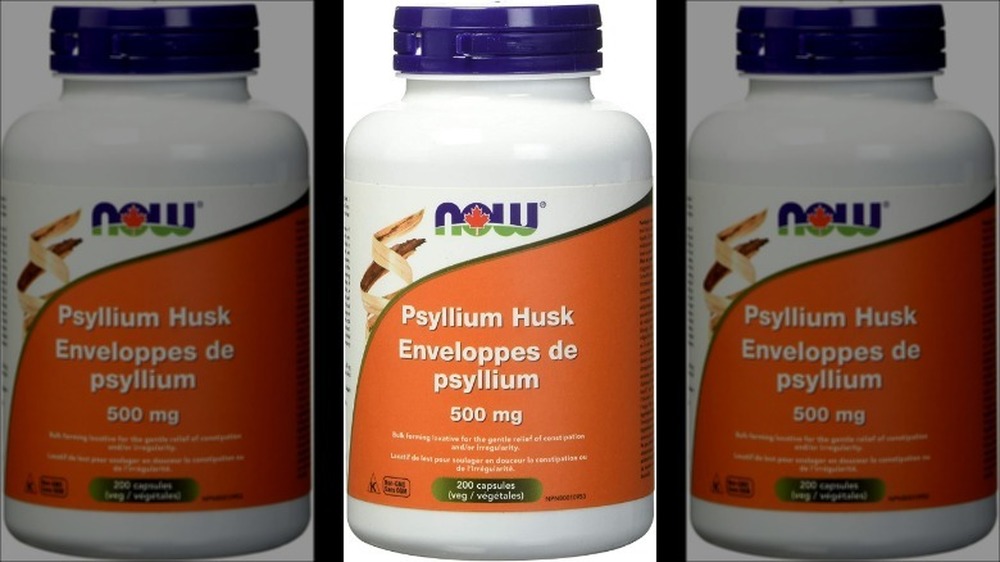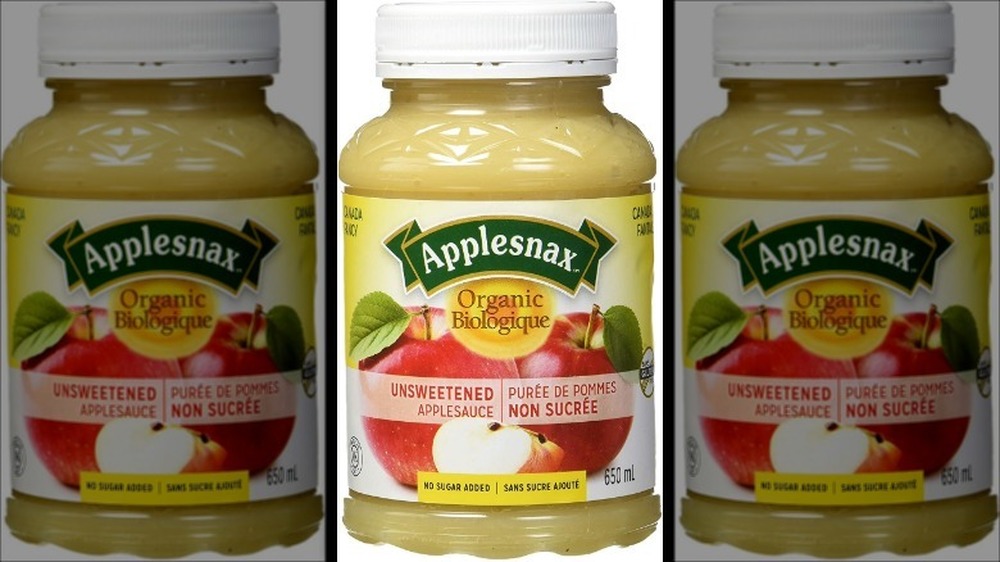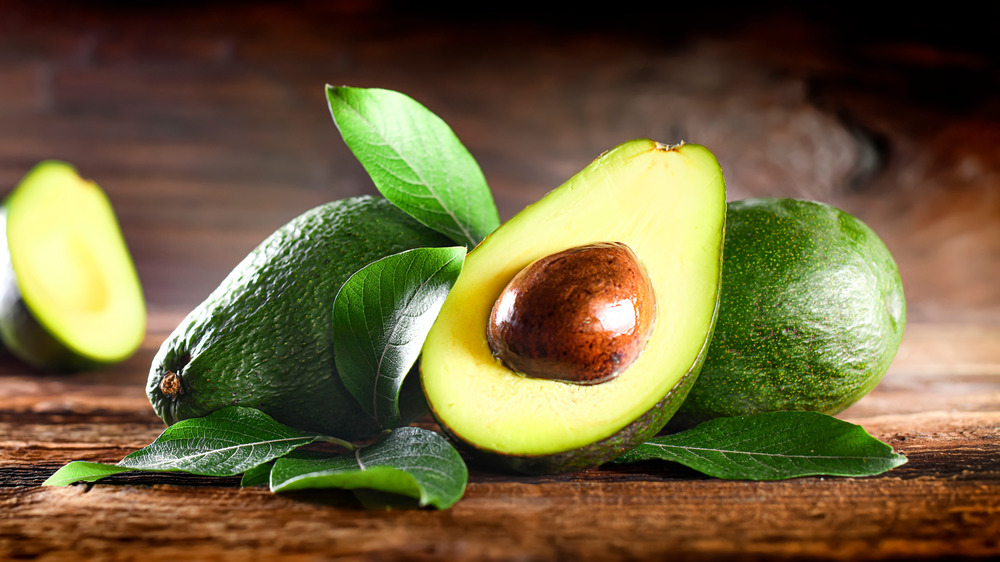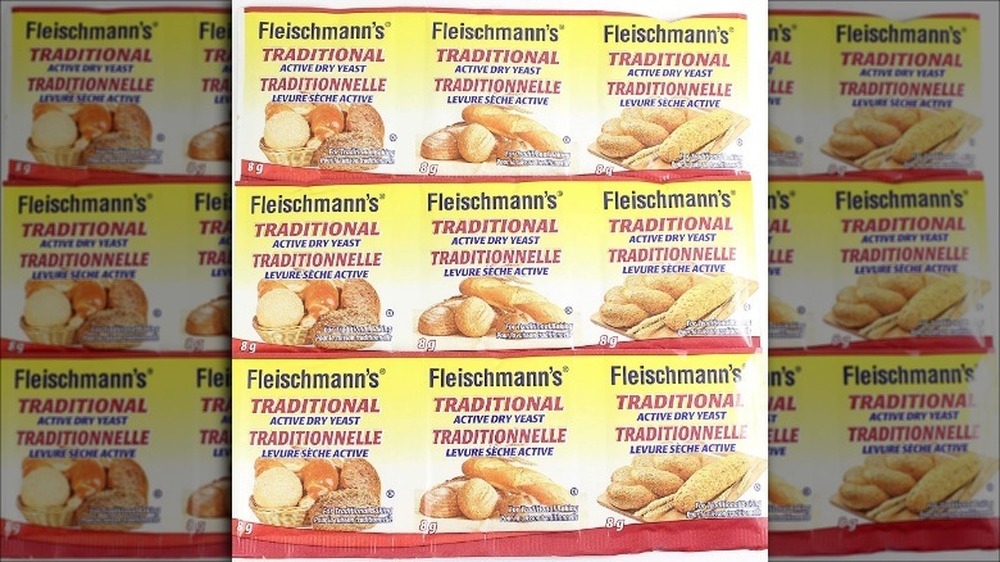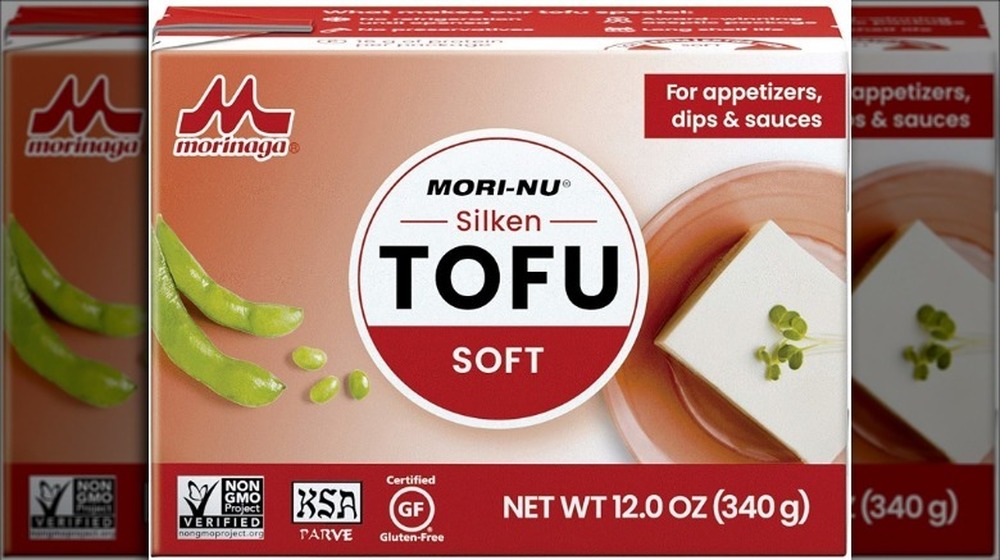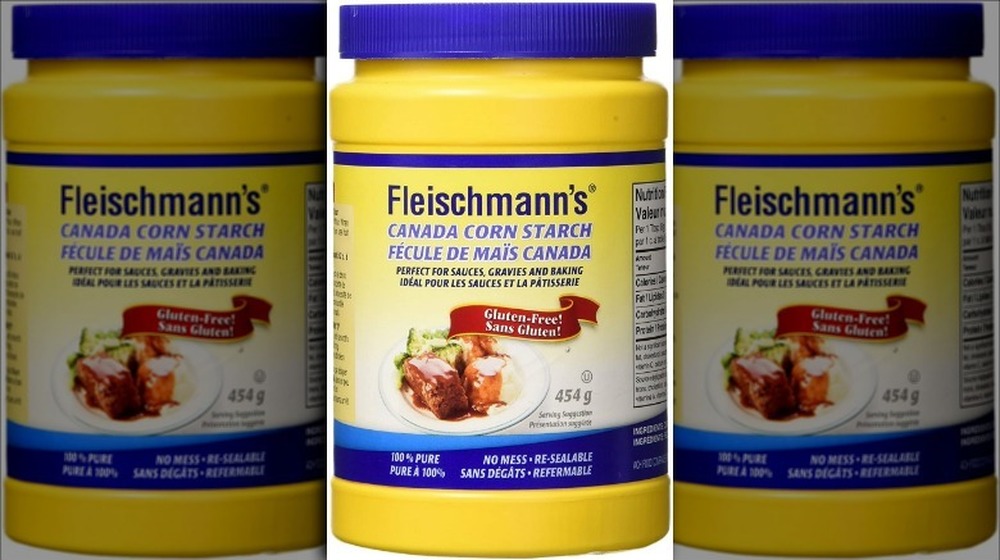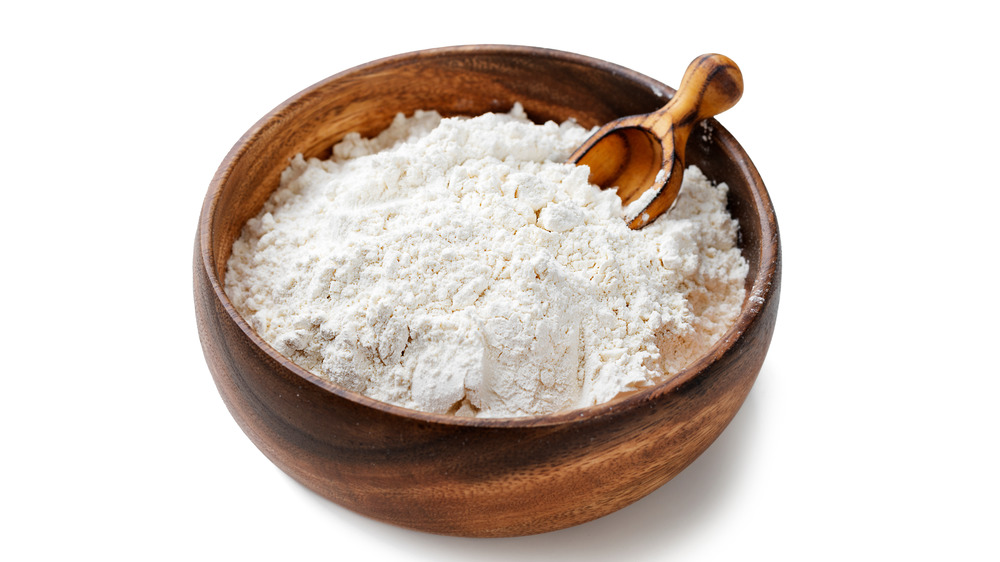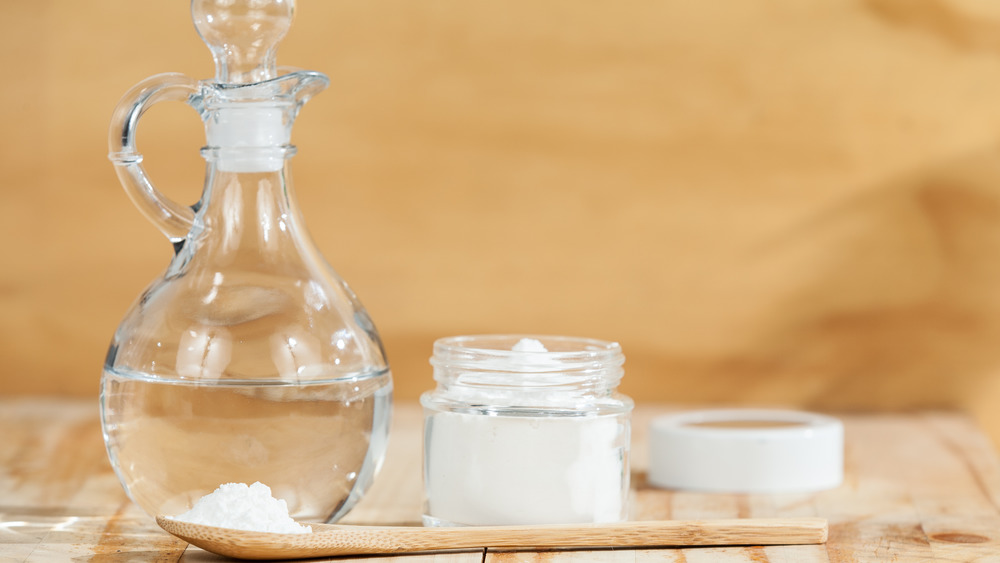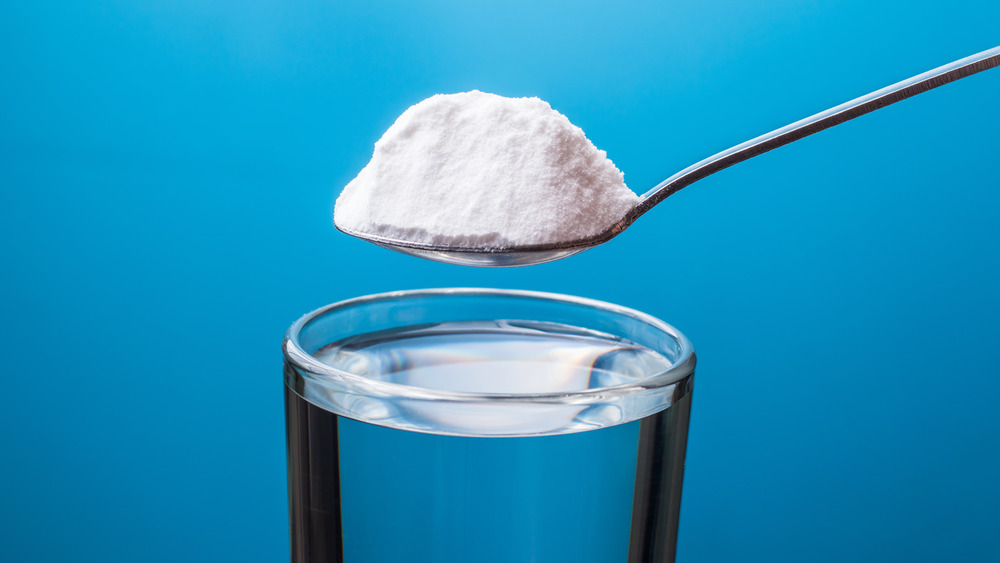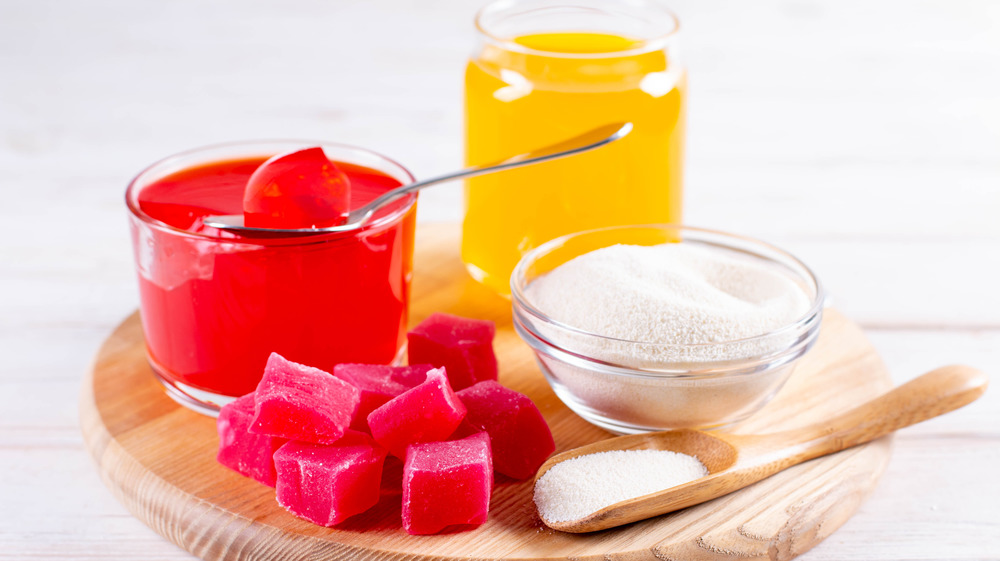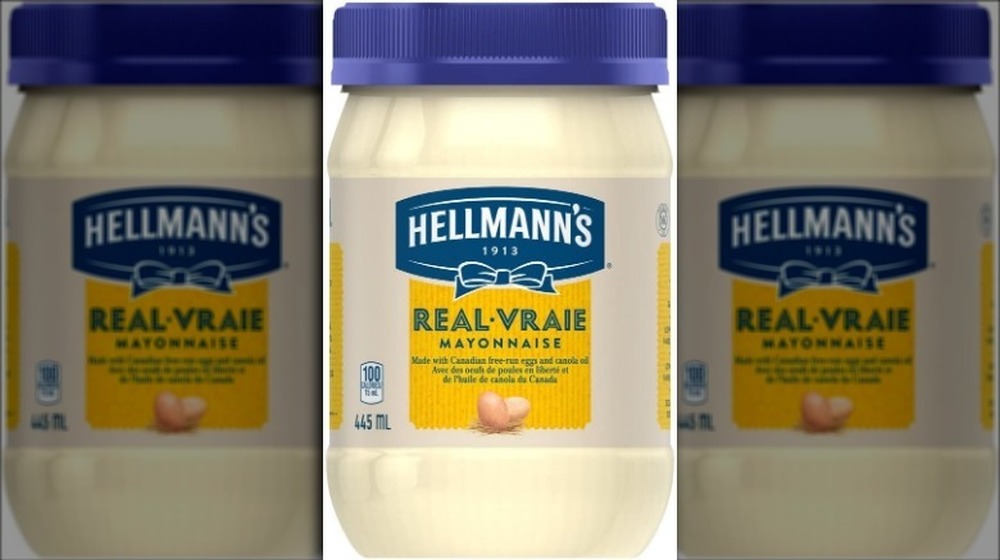Egg Substitutes Ranked Best To Worst
There are plenty of reasons you might want to replace eggs in a recipe. Maybe you're vegan. Maybe you want to go easy on the cholesterol. Or maybe you're nervous about food safety and raw eggs.
Whatever the reason, there will come a time when you'll need a substitute, but certain egg replacements work better than others depending on the situation. Sometimes mayo or tofu can work in chocolate cakes, but probably not in your vanilla cupcakes, where the flavor could be too strong. And sometimes you can only get away with so much; try to replace all the eggs in a muffin recipe, and the result will be more dense, but replace just one of two and you might not notice a difference.
While you can often sub eggs in a savory recipe with another protein (like adding eggs to a curry or pilaf), this list is aimed at recipes that need their eggs for lift (think fluffy meringue, soufflé, or waffles), binding (think burgers or patties), or moisture (muffins or loaf cakes). And there's always crossover (e.g. pancakes, which need to stick together and rise). So based on versatility, usefulness, convenience, and simplicity, here are the best egg substitutes ranked best to worst.
Commercial Egg Replacer
Commercial egg replacers are usually blends of starches and flours, they're usually vegan, and they usually do a good job of adding lift and binding to your recipes. To that end, the most popular and easiest to find brand is Ener-G egg replacer, which is made with starch, calcium lactate (not from dairy), and a bunch of food-grade, chemistry-sounding powders. Bob's Red Mill makes a simpler version with no cellulose and just potato starch, tapioca flour, baking soda, and psyllium husk.
These egg replacers top the list because they're so convenient –- you don't need to make the blend yourself and they're widely available at grocery stores. Will they make your chocolate soufflé rise sky-high? Nope. But they will work well in most cakes and baked goods that don't need a ton of lift. In general, aquafaba performs better, but you'll see why it's ranked lower in a minute.
Aquafaba
You definitely can't replace the egg white in an Amaretto sour with starchy egg replacer or applesauce. Just imagine that disaster.
The most versatile, cheapest, simplest, and most egg-like vegan substitute is aquafaba: the brine from a can of cooked chickpeas. You can use the liquid left from boiling chickpeas yourself, but buying a can is just so easy and you know the brine won't be too thick or too thin. Additionally, aquafaba whisks to a passable fluffy, egg white consistency; it's a decent binder and it adds moisture. So it's the only egg substitute that replaces all three egg functions. You can even use it to glaze pastries in place of egg yolk, as noted by Nature's Path.
Aquafaba ranks lower than commercial egg replacer on this list because there's a slight bean-y flavor that some people might find off-putting. And it's no good for anyone on a low-FODMAP diet. To replace one egg, whip three tablespoons of aquafaba for 10 to 15 minutes (via Kitchn). To replace one egg white, whip two tablespoons for the same amount of time. And if you're using the liquid as a binder, whip for 30 seconds or so, until foamy.
Meringue powder
Meringue powder is for when you need the lift of egg whites, usually for meringue (e.g. pie and pavlova), egg white-based icings, or soufflés. It's not for when you're replacing whole eggs or egg yolks. Additionally, meringue powder contains pasteurized dried egg whites mixed with cornstarch, as well as usually a bunch of stabilizers and preservatives. It's also super convenient for anyone who hates separating egg whites and yolks.
Culinary scientist Jessica Gavin says on her website that the resulting foam isn't as fluffy or stable as freshly whipped egg whites because drying the egg whites weakens their ability to bond and foam, but it's good in a pinch. To replace one egg white, use two tablespoons of meringue powder and two tablespoons of water. If you want more stable foaming but don't want to separate the egg whites yourself, you can always use pasteurized egg whites that come in a carton.
Meringue powder ranks above chia or flax because it actually rises, but below aquafaba because it's only good for replacing egg whites, not yolks. It can also be hard to find. If that's the case, order it online.
Ground chia or flax seeds
For vegan cookies, ground chia seeds or flax are both awesome egg substitutes. They add fiber and healthy Omega 3s along with much-needed binding. Since you don't need a lot of lift (that would make cookie too cake-like), these are perfect options that won't wreck the texture. But if you're making something that calls for a lot of eggs, like a pound cake, that probably means it needs lift and in that case, you should only replace one or two eggs with flax or chia or your cake will end up dense.
You should grind your flaxseeds just before using them so they don't go rancid as quickly (via Veggie Chick), but you don't need to grind your chia seeds before adding water to make a gel, as noted by Minimalist Baker. For a flaxseed egg, combine three tablespoons of ground flax with one tablespoon of water, then let it set for 15 minutes (via Detoxinista). For a chia seed egg, use the same quantities and let the seeds and water gel for at least five minutes after combining them, says The Pretty Bee.
Xanthan gum and water
If you've ever used xanthan gum, you'll know how the second it touches water it gets slimy. That's a good thing when you're trying to stick food together, though the glue-like consistency is pretty unappetizing. Still, it does the job for muffins and cakes that don't need to rise. Another upside of this egg substitute is that you only need a little. A quarter teaspoon plus a quarter cup of water will replace one egg as a binder (via Better Homes and Gardens).
You might have heard of xanthan gum from gluten-free flour blends where it's often used to replace the stickiness of gluten (but without the elasticity, unfortunately).
Fun fact: Xanthan gum is fermented! It's a dehydrated and ground powder (with mostly insoluble fiber, according to Healthline) made by fermenting glucose, sucrose, or lactose to produce the gummy substance. That sliminess, though, definitely ranks it below chia and flax. But it still ranks above psyillium because that has the same sliminess and can be harder to find.
Psyillium
Psyillium has laxative properties. It's also the main active ingredient in Metamucil! So if you ever need some regularity, think about making some muffins instead of heading to the pharmacy. Psyillium works by absorbing water in the stomach and becoming thick and viscous. It isn't digested by the small intestine (via Medical News Today), which is good for clearing out the gut as it passes right through, pulling junk in the intestine along with it. But it can actually slow digestion, so a little goes a long way.
That ability to absorb water is better than applesauce or other sweet purees when you want to stick things together, but doughs tend to dry out if not baked immediately. Additionally, psyllium is lower in fat and lower calorie than flaxseed, but it can be hard to find in mainstream grocers (though easy online), which is why this ranks below easy-to-find xanthan gum.
To replace one egg, combine one teaspoon of psyillium and three tablespoons water and let it gelatinize for 10 to 15 minutes, or just mix the psyllium powder into your dry mix and then add the liquid with your other liquid ingredients (via Will Frolic for Food).
Applesauce, mashed banana, squash, and date puree
Most lightened-up cookbooks will have this trick: swap applesauce, mashed banana, or other pureed fruit for egg. It reduces the fat and lets you lower the refined sugar in a recipe because of the natural sweetness in the fruit. It also adds a ton of moisture (think gooey banana bread).
The same goes for date puree, which is just soaked and blended pitted dates. Dates take a little more effort to prepare if you can't find them pre-made in your grocery store, but they're full of fiber, nutrients, and minerals; they're even more naturally sweet than apples, meaning you can add even less sugar.
Sometimes you can get away with replacing all the eggs in a recipe with puree, but when you need a lot of lift, a real egg will add more volume, like in a pancake recipe where you want some fluffiness. And these purees don't do as good a job of sticking things together as psyillium, which is why they rank lower. Still, you can often replace one or two eggs in a muffin recipe without noticing much of a difference.
You can replace one egg with a quarter cup applesauce, mashed banana, or squash or date puree (via Better Homes and Gardens).
Avocado
Many North Americans probably won't automatically reach for an avocado to replace eggs, but contrary to what you might think, you can cook the fruit, and it can make a great substitute for butter and egg, depending on what you're making. While anything vanilla-flavored will be a tricky sell because your final product will be green-tinged, vegan chocolate mousse, smoothies, or raw pistachio cheesecake made with avocado are all game-changers. They blend to silky perfection without the dairy and without turning on the oven.
Additionally, avocados are full of healthy fats, so if you're vegan and don't love butter replacers, this could be your new go-to swap; there's a delicious richness you don't get with other purees.
You do need to get an avocado at peak ripeness, though; if it's underripe, it won't blend smoothly, which is why this ranks below applesauce. For one egg, use a quarter cup mashed avocado (via Women's Health).
Yeast
Yeast is a good egg replacement for breads and pastries that need lift, but it has its limits; you can't just add more yeast to a recipe to get more lift. Additionally, it doesn't work as a binder or for adding moisture. Plus there'll be a very strong yeasty smell, so don't try it in your chocolate chip cookies.
Yeast is popular in gluten-free bread recipes, though, where the lack of gluten can result in denser loaves if you don't add enough leavening. Often that means baking powder or baking soda, but yeast combined with either of those is even better.
Yeast is also a regular addition to waffles, but it's handy in egg-free pancakes and even pound cakes (via Spiceography). According to Tipnut, you can replace one egg by dissolving one teaspoon of dry active yeast in a quarter cup warm water (between 105 F and 115 F). Let it start bubbling (that should take five to 10 minutes), and then add it to your recipe.
Tofu
Tofu is the classic egg replacement for vegan scrambled egg, which is partly why it ranks above mayo and some of the starch-based binders on this list. However, in sweet recipes (the real focus of this article), you need to hide tofu well; it has a very identifiable and sometimes off-putting flavor and it also won't give you any lift. That places it below yeast on this list, but on the plus side it's high in protein and can add moisture if well blended, which is why it's higher than cornstarch.
Tofu is best for when you're making already-dense foods, like flourless chocolate cakes. It can also work well in a chocolate parfait, smoothie, or blender-style mousse. But it probably won't be great in your vanilla cupcakes where the flavor could be too strong. And it's definitely not good for meringue or soufflé where lift is essential.
In general, substitute a quarter cup of pureed tofu for one egg (via Better Homes and Gardens).
Cornstarch
It doesn't get simpler than cornstarch and water when you need to stick something together. You're probably more likely to have this on hand than psyllium husks and there's no need to combine different flours or starches. Cornstarch is also pretty cheap — but it isn't going to give you lift or add moisture, and it's also not going to help your digestion or add fiber.
So when should you use cornstarch as an egg replacement? It's the traditional way of making pudding in North America, as opposed to egg-heavy English custard. It's also the difference between a rich Italian gelato made with egg yolk and no starches and an airy ice cream that gets its creamy mouthfeel from starchy and flavorless thickeners like cornstarch. That's not to say that pudding, cream pie, or ice cream made with starch is bad, but it's just not as intensely dense and flavorful.
To replace one egg, use two tablespoons of cornstarch and three tablespoons of water or another liquid (via Connoisseurus Veg).
Flour, shortening, baking powder, and milk or water
This is a simple combination that isn't going to get you a ton of lift, but there's baking soda in baking powder, plus some cream of tartar (via Sally's Baking Addiction), which is good for lift (and a better binder than just baking soda). Additionally, the flour has gluten, which adds elasticity. And the milk and shortening add more fat, which usually creates a better flavor and texture, making milk a better option than water. You might think you can skip the shortening, but have you ever tried making pie crust with oil instead? It's just not as good.
This is a great egg substitute for cookies, single layer cakes, and pudding cakes. The combination ranks below cornstarch, though, because it's more complicated to make; you need the right ratio of ingredients: two tablespoons of flour, half a tablespoon of shortening, half a teaspoon of baking power, and two tablespoons of milk to replace one egg (via Tipnut). But it ranks above baking soda and vinegar because it'll do a better job of rising and adding moisture.
Baking soda and vinegar
Remember that primary school science class where you made a volcano? Even if you never did it, you probably know about the trick: if you pour vinegar over baking soda, it's going to get all active and overflow-y. The same thing happens when you make your own cleaning supplies (seriously, vinegar and baking soda clean just about everything).
But yes, you can also use this combination as an egg replacement; it just won't add anything delicious to the mix, and you generally use it in small quantities because the effects don't last long once they interact. That volcano fizzled out, remember? It's the genius behind the wacky cake, though, where you mix the batter and bake it immediately.
This is more of an egg yolk replacement than an egg white replacement (via Better Homes and Gardens). To replace one egg, combine one tablespoon of vinegar with one teaspoon of baking soda (via Tipnut), but not until you mix all the batter together!
Oil, baking powder, and water
This egg replacement is similar to the flour, shortening, baking powder, and milk combination, but less effective. The oil isn't as rich as shortening, so the effect won't be as fluffy, and if you're making pastry it can end up feeling greasy. You also won't get a lot of lift.
The water isn't as thick as milk, either, so again, not as fluffy. But this combination is a useful formula in a pinch, since you're likely to have oil, baking powder, and water on hand. Plus it's naturally gluten free, unlike the flour combo above. And it's vegan, also unlike the flour and shortening option. It's also a decent binder that will give you a fair bit of moisture (think banana bread).
To replace one egg, combine two tablespoons water with one teaspoon oil (vegetable, olive, or other), and two teaspoons of baking powder (via Tiphero).
Agar agar or gelatin
Gelatin is what you use to make Jell-O and agar agar is a vegan substitute made from seaweed; both make foods gel. You definitely don't want your cakes and cookies to have that stiff Jell-O-like texture, but you might want it for parfaits and mousses in place of bland, flavor-masking starches.
Agar agar or gelatin aren't going to give you moisture, and it's easy to overdo it with the geling, so follow a recipe carefully or have the time to mess up a few batches of whatever you're making before you get it right. Additionally, these are definitely not as versatile as egg replacements as everything above, and at least mayonnaise (below) can make delicious, non-wobbly cake.
To replace one egg, whisk one tablespoon of powdered gelatin or agar agar with three tablespoons of hot water (via Go Dairy Free). You can bring it to a boil (like making Jell-O) if you want to make sure it blends evenly before setting.
Mayonnaise
This might seem weird, but mayonnaise is basically oil and eggs, so it's creamy, moist, and fatty –- everything an egg needs to be for most baked goods. That means that as long as you mask the flavor of the mayo (and as long as there are no other additions to the commercial blend, like garlic or spices), it'll work!
Since mayonnaise does have eggs in it, this isn't a vegan substitute and it isn't acceptable for anyone who has an egg allergy, but it's great if you've run out of eggs and want to make chocolate brownies or cake. And the best news is, you can use a vegan mayo in place of regular mayo in recipes where you want more moisture and depth of flavor, which you won't get from liquid-heavy substitutes like applesauce. For one egg, use three tablespoons of mayonnaise as a replacement (via Tipnut).
